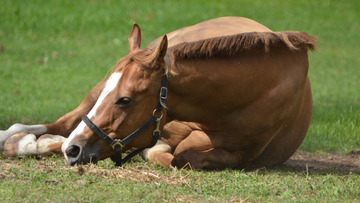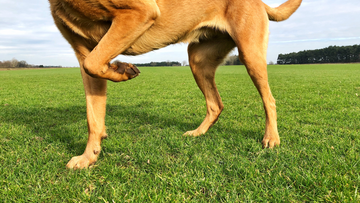Wild horses roamed for thousands of years with no need for horseshoes, but now farriers use them regularly. Why is that, and is it necessary? The most common factors for needing shoes on your horse involve terrain, training conditions, and corrections.
Pros vs. Cons of Shoeing
If the ground your horse walks on most days is hard, like asphalt, rocks, or dry sand, their hooves naturally wear by stepping on those surfaces. The uneven wear on the hooves in these conditions would be a reason to use shoes on your horse.
The same logic can also explain the need for shoes if you are training on hard surfaces regularly. If your horse is mostly on soft surfaces and grass, their hooves will wear down much slower, making natural barefoot farriers a possible option.
Corrections are another reason a farrier might recommend horseshoes. Horseshoes can be used with wedges and angels to make the hooves lay flat for each step. If a horse is wearing the heel of its hoof more quickly than its front toes, this can cause lameness, sore legs, and even injury over time.
As you can see, shoeing has many benefits, but it isn't always necessary for your horse.
Another benefit of barefooting is that you won't have to have your farrier visit the farm quite as often. Generally, shoes are checked and reset every 6-8 weeks, depending on growth. If your horse throws shoes regularly, you’ll see the farrier more frequently. This is one of the biggest cons of shoeing. You will get a bill; it'll be costly if they need to put on a new shoe.
Pros vs. Cons of Barefoot
 If horseshoes protect your horse’s feet so well, why are there many horse owners who keep their horses barefoot?
If horseshoes protect your horse’s feet so well, why are there many horse owners who keep their horses barefoot?
Horse hooves are naturally designed for shock absorption and energy dissipation. Horseshoes can interfere with or restrict these processes. Barefoot horses tend to grow tougher soles, encouraging healthy blood circulation and hoof growth.
Barefoot can be a good option if you ride on similar terrain. However, if you are a trail rider and ride on various terrain, it will take time to build up your horse’s sole.
Note - if you are an occasional trail rider and still want to go barefoot, consider getting temporary boots for trails. Temporary boots protect your horse’s feet from occasional rugged terrain without committing to horseshoes. There are lots of waterproof, breathable options for wet trails, too!
Most farriers are well-versed in barefoot trimming, but there are some who specifically specialize in barefoot horses. They focus on creating a healthy frog and a balanced natural hoof.
Whether you use shoes or barefoot hoof management, prices vary widely depending on your location. If you are considering switching from shoeing to barefoot, consult your farrier and veterinarian first. They will have a good understanding of your horse’s lifestyle, use, and daily routine. While barefoot can be an excellent option for some horse owners, it is not ideal for every horse.






















